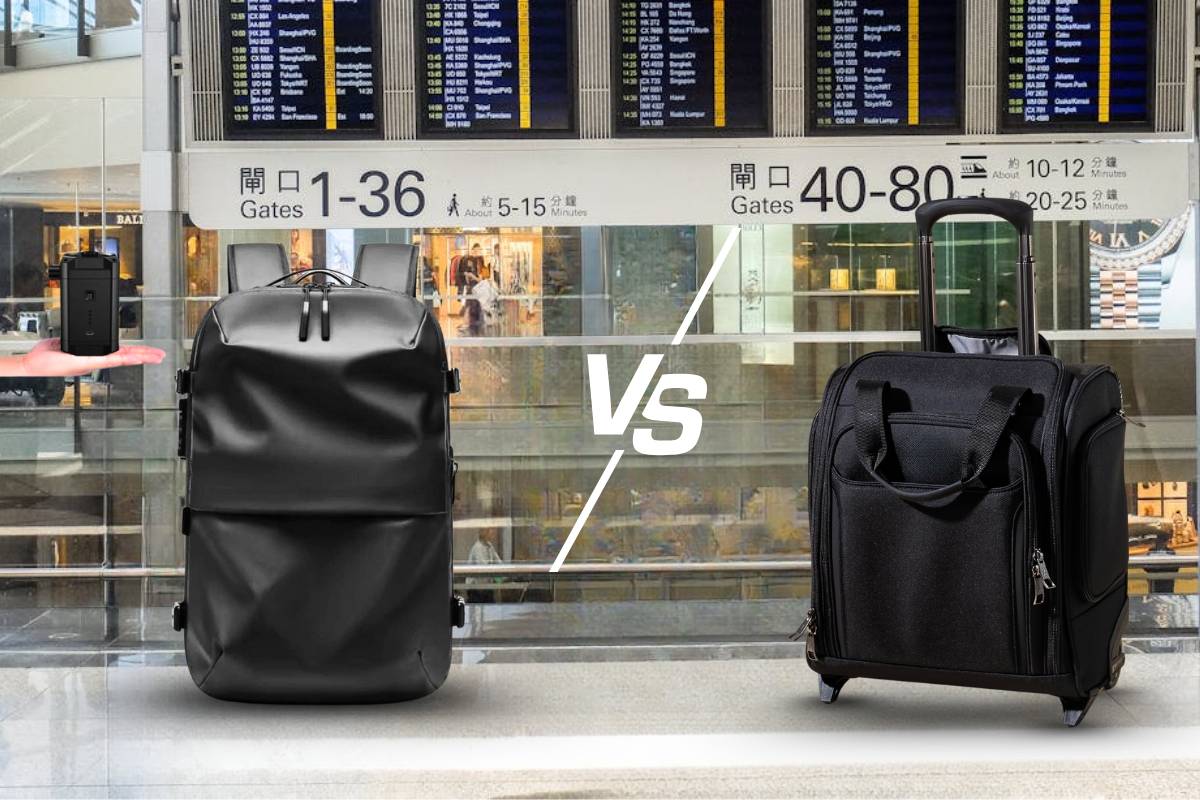Touching down in Paris means choosing between several airports, each offering a unique gateway to the city’s vibrant heart. The two main hubs—Charles de Gaulle to the northeast and Orly to the south—handle the bulk of international and domestic flights, connecting millions of travelers to the French capital every year. In fact, Charles de Gaulle alone served over 70 million passengers in 2018, making it France’s busiest airport.
Strikes in Paris
Strikes frequently disrupt Paris airports, affecting both international and domestic travel. Transport workers, air traffic controllers, and ground staff sometimes participate in organized strikes, impacting airport operations at Charles de Gaulle, Orly, Beauvais, and Le Bourget. During strike periods, flight delays and cancellations increase across all major terminals.
Flight schedules, public transport connections, and baggage services experience the most significant disruptions. For example, RER train service between Charles de Gaulle and central Paris sometimes halts entirely during strikes, reducing access to the city center. Airport shuttles and taxis may see longer wait times or limited availability.
Airport authorities update passengers in real time during strikes, but contingency plans remain limited. If you're traveling to or from Paris during known strike windows, check your flight status and transport options regularly for timely information. Reliable sources include airline websites, Paris Aéroport’s official site, and local news advisories.
Charles De Gaulle (CDG)
Charles De Gaulle (CDG) stands as the main Paris airport and France's busiest, handling over 76 million travelers in 2019. Located about 25 kilometers northeast of central Paris, CDG features three main terminals: Terminal 1 (serving most international flights), Terminal 2 (Air France's primary base, with seven subterminals for domestic, European, and international routes), and Terminal 3 (for low-cost carriers such as easyJet and Transavia, plus charter flights).
CDG connects to central Paris using several efficient options. The RER B train departs every 10 to 15 minutes on weekdays, reaching Gare du Nord in 25 minutes, Châtelet–Les Halles in 28 minutes, and Denfert-Rochereau in 35 minutes. The one-way fare is €11.80. Taxis average a 30–45 minute journey to the city center when traffic's light. Shuttle buses and private chauffeurs give you alternative ways to get into town.
CDG hosts dozens of international and domestic airlines, including Air France, KLM, Delta, American Airlines, United, Lufthansa, British Airways, Air China, and Singapore Airlines. Low-cost options like easyJet, Transavia, Iberia Express, and Vueling fly from here, supporting connections across Europe and worldwide.
Airport facilities at CDG cater to a variety of traveler needs. Dining ranges from fast food outlets to gourmet restaurants, while shopping includes duty-free stores, luxury boutiques, and souvenir shops. Free WiFi, passenger lounges, children’s play areas, baby-changing stations, and business services enhance your in-terminal experience.
Travelers in transit or with early flights can access several hotels near CDG, including both luxury options like Sheraton and budget-friendly brands like Ibis and Novotel. Many properties offer direct airport shuttles. Efficient customs and security processes keep average arrival wait times between 30 and 45 minutes, so you can usually clear the airport in under an hour outside peak demand.
Paris Charles De Gaulle operates as a central node in Europe, on par with airports like London Heathrow and Frankfurt, and remains the primary hub for both Air France and a full roster of leading global airlines.

Paris Orly (ORY)
Paris Orly (ORY) functions as the second largest airport for regular commercial flights in the Paris region after Charles de Gaulle. You find Orly located roughly 18 kilometers south of central Paris, giving it the closest city access among the major airports. Orly splits operations between two primary terminals: Orly South (Orly Sud) for the majority of international—including many European and long-haul—flights, and Orly West (Orly Ouest) for mainly domestic routes plus select international services.
Orly serves airlines like Air France, Transavia, easyJet, and Vueling, enabling direct connections to destinations across Europe, North Africa, and the Middle East. Major cities you can access include Barcelona, Madrid, Casablanca, and Rome. Passenger numbers exceeded 32 million in 2019, positioning Orly as a critical entry point for both business and leisure travel.
Facilities at Orly include ATMs, currency exchange points, luggage storage, post offices, duty-free shops, and a diverse selection of restaurants. You see waiting areas and dedicated family zones throughout the terminals for layover comfort. Information counters assist with airport navigation, and bilingual staff support most traveler needs.
Ground transport options at Orly cover the Orlyval automated light rail for quick transfers to the RER B line, buses to key city points, streetcar line T7, and taxis at fixed fares. Taxi trips to central Paris last about 30-40 minutes, with rates set by law and surcharges for trips to either the left or right bank. Public transport links operate at frequent intervals, with tram T7 connecting to Villejuif-Louis Aragon metro for access to the city’s network.
Paris Orly’s location, comprehensive services, and extensive transport links make it a practical hub for accessing the French capital and the wider region. If you’re traveling during peak periods or in case of industrial action, real-time updates from service operators help you avoid delays.

Paris Beauvais-Tillé (BVA)
Paris Beauvais-Tillé Airport (BVA) serves as a key option for budget travelers seeking access to Paris and Europe’s secondary cities. Handling over 5 million passengers in 2023, BVA ranks as the tenth-busiest airport in France and offers flights to nearly 80 destinations in 29 countries. Major low-cost carriers at BVA include Ryanair, Wizz Air, easyJet, Laudamotion, HiSky, and Volotea, serving routes across Europe, Morocco, and Amman.
You find BVA about 85 kilometers (approximately 53 miles) northwest of central Paris, in the town of Tillé. Despite the distance, BVA remains popular due to lower fares and frequent departures by budget airlines. The airport operates two terminals, with service facilities like ticket counters, check-in desks, baggage claim, and passenger assistance available throughout.
Efficient transportation connects BVA to Paris and nearby regions:
-
Shuttles: Regular shuttles depart every 20-30 minutes direct to Porte Maillot in western Paris, with a travel time of about 75 minutes. Tickets start at €16.90 one-way.
-
Buses: City buses including Lines A01, A02, A03, and A04 link the airport to major Paris neighborhoods like La Défense, Saint-Denis, and La Villette.
-
Trains: Trains run from Beauvais SNCF station to Gare du Nord in Paris in about 75 minutes, with options to access the station via shuttle bus or taxi from BVA.
-
Taxis and Private Transfers: Cabs and private cars provide direct door-to-door service at a higher price point.
For overnight stays or early flights, you find several hotels near Beauvais-Tillé Airport and in Beauvais town. The area offers a range of accommodations catering to backpackers, families, and business travelers alike.
BVA’s primary appeal centers on its extensive low-cost network and the value it provides despite being farther from Paris’s center than CDG or Orly. If you seek affordable options and direct international connections on budget airlines, you get efficient departure and arrival service through Beauvais-Tillé Airport.

Paris Châlons Vatry (XCR)
Paris Châlons Vatry (XCR) airport operates as a small regional hub serving around 60,000 passengers in 2018, primarily flying with budget carriers such as Ryanair or Iberia. Located roughly 145 kilometers east of central Paris near Châlons-en-Champagne, XCR sits farther from the city than other Paris airports.
Most flights at Vatry connect to European destinations through low-cost airlines, making it an affordable entry point for budget-conscious travelers. Check-in, boarding, and baggage claim processes remain efficient due to the airport's small size.
For ground transport, direct transfers between Vatry and Paris aren't available. Instead, you travel by airport shuttle to Châlons-en-Champagne or Reims, then proceed by train to Paris Gare de l'Est. This trip typically requires at least 2-2.5 hours, depending on train schedules and shuttle service.
Public transportation at Vatry includes:
-
Airport shuttle: Connects only to Châlons-en-Champagne or Reims
-
Regional train from Reims/Châlons-en-Champagne: Provides service to Paris
-
Taxi and private transfers: Offer door-to-door travel but at a higher cost
You won’t find direct bus or train connections from XCR to Paris center. When carrying luggage, keep in mind public transport in and around Paris often lacks dedicated baggage compartments, so you store bags beside your seat.
Vatry airport primarily fits travelers seeking low fares and who don’t mind longer transfer times or indirect connections to central Paris. It remains less convenient than CDG, Orly, or Beauvais for rapid city access, but offers a practical choice for budget flights—especially during peak travel periods or when major Paris airports experience congestion or industrial actions.
What Luggage Is Best for Paris?
Selecting luggage for Paris airports means considering strict security, efficient transport options, and busy passenger traffic. Compact Travel backpacks and lightweight carry-ons suit CDG, Orly, and BVA terminals, where lifts, escalators, and narrow boarding areas often require swift movement. Soft-shell cases fit in overhead bins on low-cost carriers like Ryanair or easyJet, which commonly operate from Beauvais and secondary terminals at CDG and Orly.
Hard-shell luggage protects valuables during customs inspections and when checked at larger hubs, especially given the volume of travelers—over 100 million combined at CDG and Orly in 2019. Most Parisian public transport, like RER B to CDG or Orlyval to Orly, favors smaller bags that maneuver easily through turnstiles and crowded cars.
Airport security enforces the 100ml liquid limit in carry-ons and restricts oversize or overweight bags at gates, particularly for budget airlines flying from Beauvais and Vatry. In main terminals, luggage storage and baggage wrapping services add protection and convenience if you want to explore Paris before your flight.
Wheeled duffels or weekenders combine flexibility and mobility for short trips or connections. For trips with multiple destinations in France, expandable suitcases and modular packing systems adapt to changing airline and train requirements.
A luggage table for Paris airports:
|
Airport |
Ideal Luggage Type |
Main Considerations
|
|---|---|---|
|
Charles de Gaulle (CDG) |
Hard/soft carry-on, mid-size checked |
Security inspections, high traffic, escalators |
|
Orly (ORY) |
Narrow terminals, many public transport transfers |
|
|
Beauvais (BVA) |
Strict bag size for low-cost airlines |
|
|
Vatry (XCR) |
Long transfers, lower passenger volume |
Choose luggage that maximizes flexibility, meets airline and security standards, and simplifies transfers between terminals, transport, and city hotels.
Summary
Navigating Paris airports can feel overwhelming but knowing your options helps you make the most of your trip. Whether you're flying into a major hub or a budget-friendly alternative you'll find convenient transport links and essential amenities at each location. Stay alert to travel updates and choose luggage that fits your plans for a smoother journey. With the right preparation your arrival in Paris will be as seamless and enjoyable as possible.
Frequently Asked Questions
What are the main airports in Paris?
Paris is mainly served by two large airports: Charles de Gaulle (CDG) in the northeast and Orly (ORY) in the south. Beauvais (BVA) and Châlons Vatry (XCR) are smaller airports used by budget airlines and for select European flights.
Which is the biggest airport in Paris?
Charles de Gaulle Airport (CDG) is the largest and busiest airport in Paris, handling over 76 million travelers in 2019. It is located about 25 kilometers northeast of central Paris.
How do I get from Charles de Gaulle Airport (CDG) to central Paris?
You can reach central Paris from CDG using the RER B train (about €11.80 one-way), airport shuttle buses, taxis, or private transfer services. The train is often the fastest and most affordable option.
Does Orly Airport have a direct train connection to Paris?
Yes, Orly Airport offers the Orlyval light rail, which connects to the RER B train at Antony station. From there, you can easily reach central Paris.
How far is Paris Beauvais Airport from the city center?
Paris Beauvais Airport (BVA) is about 85 kilometers (53 miles) northwest of central Paris. The airport shuttle to Paris takes roughly 80–90 minutes each way.
Are there budget flight options to or from Paris?
Yes, both Beauvais (BVA) and Châlons Vatry (XCR) airports cater primarily to low-cost carriers like Ryanair and easyJet, providing cheaper flight options for European destinations.
What should I do if there is a strike at Paris airports?
Strikes occasionally disrupt flights and transport at Paris airports. Monitor your airline's website and local news for updates. Plan for extra travel time and have backup transport options like taxis if public transport is halted.
What are the best luggage options for Paris airports?
Choose compact, lightweight rolling suitcases or carry-ons to navigate busy terminals and public transport easily. Make sure your luggage meets airline size restrictions—especially for budget carriers.
Is it possible to stay overnight near Paris airports?
Yes, all major Paris airports, including CDG, Orly, and Beauvais, offer a range of nearby hotels for convenient overnight stays or early departures.
Which airport should I choose when flying into Paris?
Charles de Gaulle (CDG) is recommended for most international travelers due to its connections and services. Orly (ORY) is convenient for domestic and some European flights. Beauvais (BVA) and Vatry (XCR) are best for budget options but are farther from the city.















